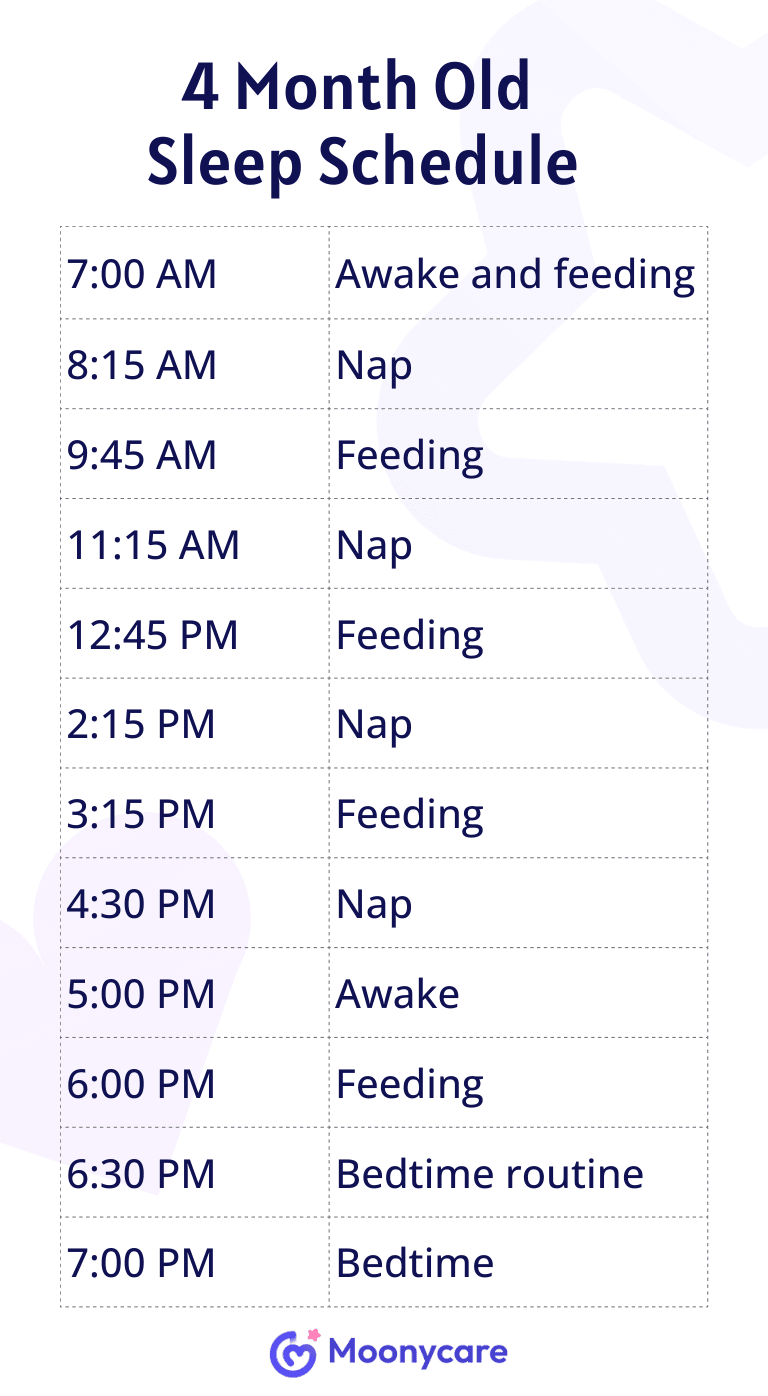

During this period, you might have observed that your baby sleeps less than before. The baby is now more energetic and sociable, and has a growing interest in exploring the surrounding world. To help you better foster your baby, we'll offer you the schedule details to make sure your baby get what they want during the development.
IN THIS ARTICLE:
What are Wake Windows for a 4 Month Old?
Sample for 4 Month Old Sleep Schedule
How Much Should a 4 Month Old Sleep?
What is the 4 Month Sleep Regression?
Can you Sleep Train a 4-month-old?
What are Wake Windows for a 4 Month Old?
The wake windows are gradually lengthened with the growing of babies. At 4 month old, it should range from 90 to 120 minutes. One should know in advance is that the wake windows are shorter in the morning and become longer as time goes. However, since every baby is different, some babies may exceed this range at this age, while some may not. Thus, keep observing your baby to ascertain the most suitable wake windows within this age-specific range.
Sample 4 Month Old Sleep Schedule
Remember that not every child can adhere to a schedule strictly because each has their specific habits.
How Much Should a 4 Month Old Sleep?
At 4 months old, babies typically necessitates 12 to 17 hours of total speed within a 24-hour period. Obviously, sleep requirements for each baby is diverse, and there is a spectrum to be regarded as normal and healthy. Although the suggested sleep hours is just an overall guideline, it is also significant to observe your child's energy levels and mood.
At this time, you baby has a better understanding of the difference between day and night and capable of sleeping longer and consistent throughout the night. To regulate a more scientific sleep routine for your baby, it is recommended to use Moonycare app, which allows you to personalize a specific sleep schedule for your baby based on their morning waking time, bedtime, and the hours of sleep each night.
Naptime for 4 Month Old
#1. How Long Should a 4 Month Old Nap?
4 month-old babies are estimated to possess about 5- 4.5 hours of sleep during the daytime.At this time, naps can be inconsistent. Don't be disheartened if you notice numerous short naps. It is normal that naps last 30 - 45 minutes, but it is not recommended to exceed 2 hours. On the one hand, ensuring enough time in the day helps you baby to intake enough calories for development. One the other hand, guaranteeing that naps do affect nighttime sleep.
#2. How Many Naps Should a 4 Month Old Take Each Day?
The majority of babies at this age require - 4 naps daily. Naps still remain erratic at this point, it's usual for babies to have either 3-nap or 4-nap days within the same week, which is determined by the length of the naps. Babies who take longer naps will keep awake for longer intervals, so it is enough for them to work well with a 3-nap schedule.
What is the 4 Month Sleep Regression?
At 4 months old, the sleep patterns will have a significant change that even disorders sleep, which is called 4 month regression. Specifically, a baby might wake up more often during the night or encounter challenges in napping during the day. Some parents may go through a hard time with it and even feel overwhelmed. Fortunately, these changes are normal and won't extend too long. To overcome the regression, the key is to maintain your baby's bedtime routine to help your baby go back to the sleep.
Can you Sleep Train a 4-month-old?
From my personal experiences, it is recommended to start sleep training when your baby reaches 5 months. At four months, babies are not developmentally prepared. For example, the melatonin is still regulating, sleep cycles are still changing, and your baby's brain are busy in dealing with new things. Due to the 4 month sleep regression, sleep training can be more challenging. Some of those who tried sleep training at 4 months got the opposite result, causing their babies to cry more.
But from the view of pediatricians, they encourage parents to attempt sleep training at this age. To do so, your baby can soothe themselves and fall asleep independently without your comfort. If you have interest, there is two methods for your reference.
-
Leave the baby alone: Allowing your baby to cry until she/hefalls asleep without any interference
-
Ferber method: Checking on your baby at intervals that gradually increase in length
Sleep Tips for 4 Month Old
Allocate time for tummy time.At 4 months, baby will start to learn how to roll or turn over. Setting aside adequate time allows your baby to practise rolling enough during the tummy time.
Adhere to your bedtime routine Since the challenges of sleep regression, it's more crucial than ever to follow the same soothing routine each night, indicating your baby that it's sleep time.
Shorten the naptime routine. It is too complicated to handle all procedures before every nap, A simplified routine contains the basic elements is enough, which can also signal to your baby for taking a nap.
Put your baby to bed when she's drowsy. This way can help your baby get used to falling asleep independently.








